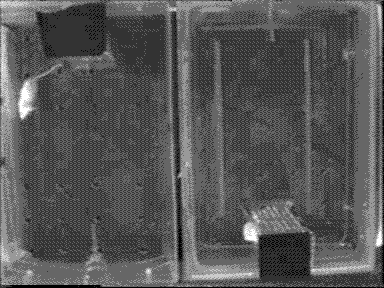Computer-Aided Ethology
Computer-aided ethology aims to simulate human ethological functions or visual observations and cognitive analysis. As a pH.D. project , I captured the (X, Y) coordinate* and Surface Area, of 4 mice, during 4 hours, (to a data file), every 40 millisecond (25 data points (images) / second). Each, of the four motion files contains approx. 360,000 records! The problem, as I’ve defined it, is divided into 3 principle components, Input, Data and Behavior Analysis. Input -How to capture the data. Data – How to convert the data to motion and then to behavior Behavior – How to create “knowledge” about behavior, which also entails measuring, evaluating and understanding.
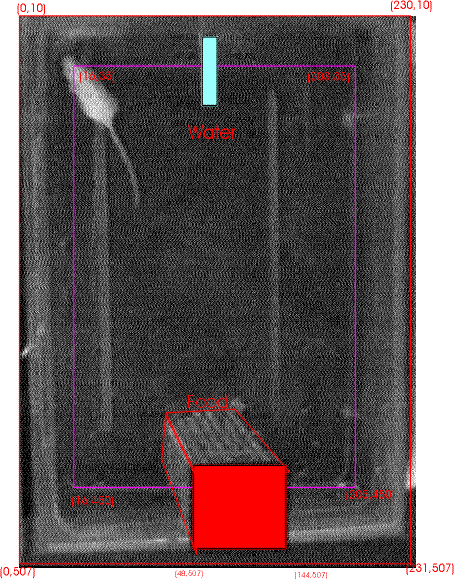
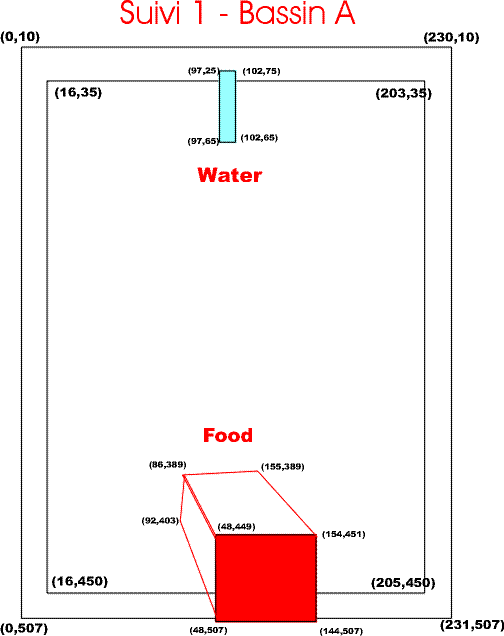
Fundamental Differences
This is an image of just one basin with the mouse, the water and the food distributor.
Fundamental Differences : From a machine vision perspective the image contains pixels with gray levels. We recognize water, food, sides, floor, … We can defined objects at fixed coordinates and track objects which contrast from other objects. However, it is difficult to imply impression, i.e. “near the food”. The subject (i.e. mouse) surely sees all this from another perspective. (* Note : the X,Y coordinate is the location of the berry center of the animal).
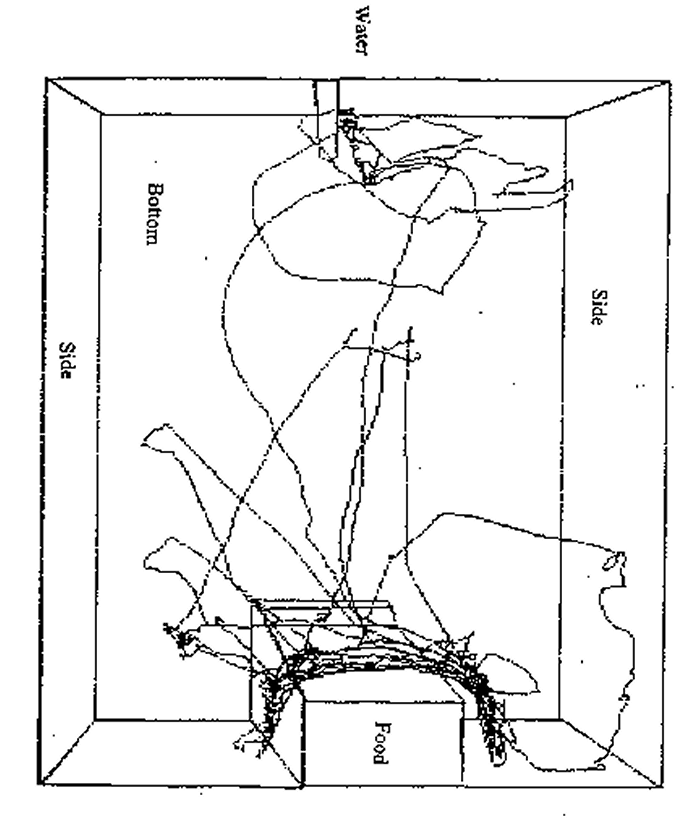
Graphical representation of Basin and Motion Data How to Present Data? This diagram of motion data provides certain information but eliminates sequence and time. Replacing and eliminating data could provide more information for humans but limit a computer’s potential to resolve problems. This illustrates the mouse’s activity and indicates area of interest, to the mouse!
My Software Tools
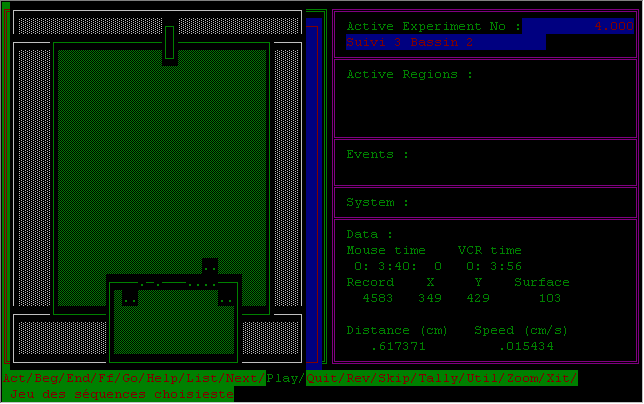
Analysis Tools
Dividing the basin into regions with labels eg. Ab, Fi and then analyze the sequence of regions.
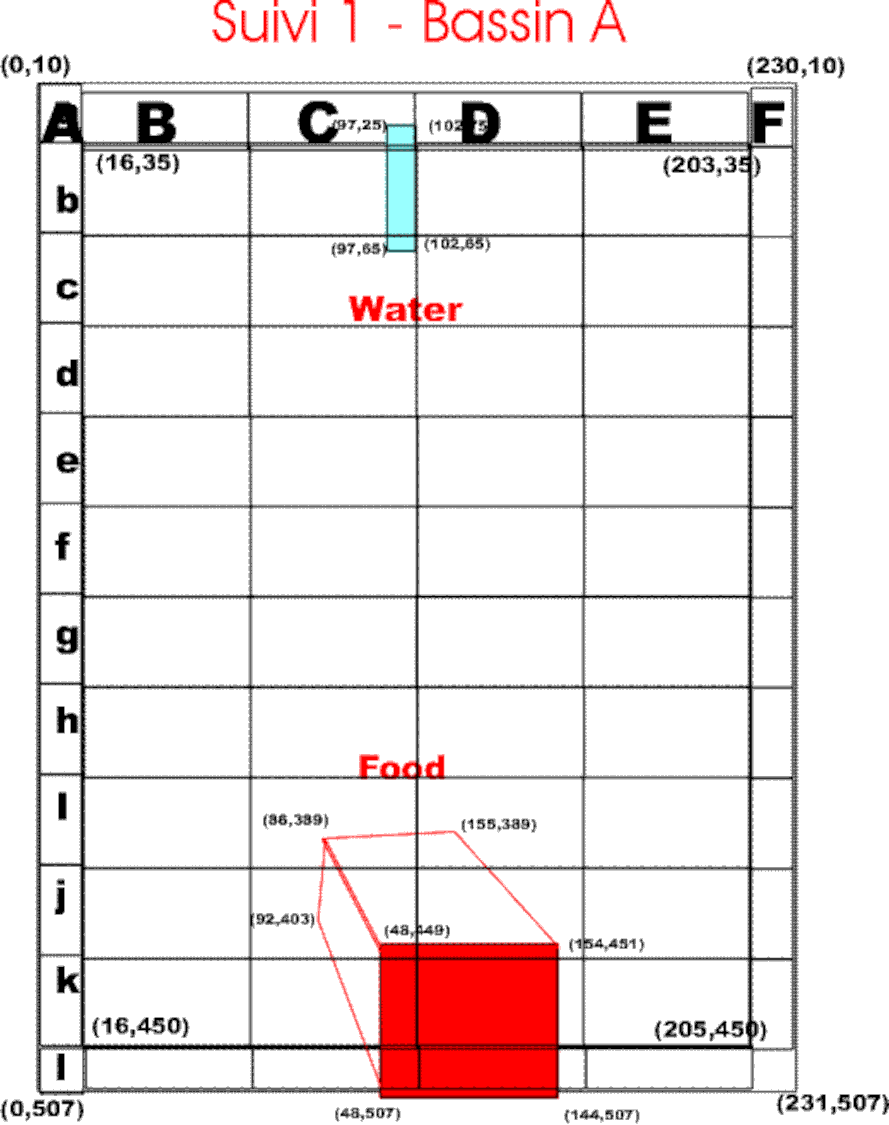
Catching data errors, in this case the mouse jumps up, toward the camera so fast that the equipment looses data points.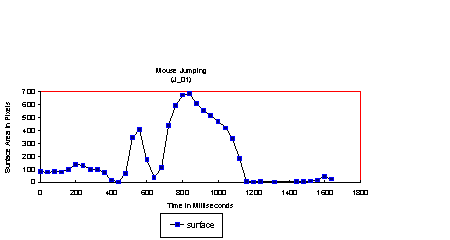
Conclusions
There are several lessons I learned.
Doing this in 1991 was way to advanced for our technologies and knowledge.
The idea was original while putting into application required more administrative talent than technial know how.
